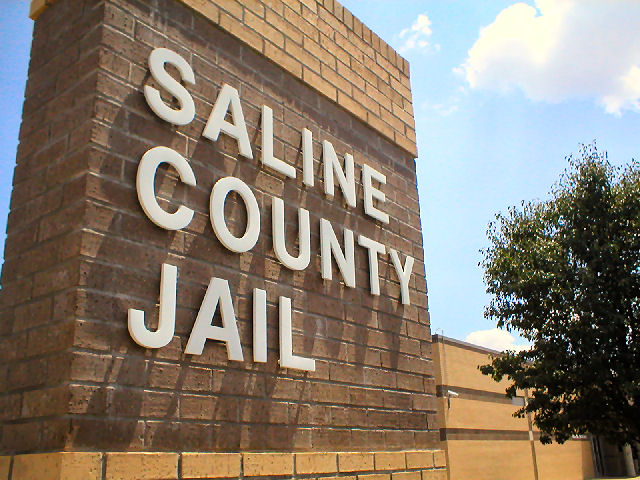In a special meeting, Saline County Commissioners heard final recommendations from Jim Robertson, of Voorhis/Robertson Justice Service, who spent the last year analyzing the county’s inmate population. Robertson said that there is “no zero cost option in Saline County” for dealing with a growing jail population. He concluded that building a new jail on a new site would have the lowest overall capital and operating costs. He is the same consultant that recommended the county build a criminal justice center with a 344 bed jail in 2014; voters defeated that measure 6,369 to 5,487.
Facts and Figures
The Saline County Jail has 192 beds; however, ideally 85% of its capacity is used. The remaining 15% classification buffer is needed to enhance inmate and officer safety. The average daily population increased from 143 inmates in 2008 to 263 in 2017. The Average Length of Stay (ALOS) increased from 8 days in 2008 to 20.4 days in 2017. In both 2013 and 2017, a small group of inmates consumed the majority of jail beds (4% and 7% respectively). In 2017, 86 more inmates stayed 91+ days than in 2013.
Few foresaw the jail population spike. Director of Community Corrections Annie Grevas suggested that State prisons are overcrowded and the State is looking for ways to reduce their inmate population. Sheriff Roger Soldan said it is possible that using contract housing has resulted in longer stays as inmates aren’t as readily available to meet with their attorneys and can’t quickly appear in court if an officer must travel out of county to retrieve the inmate on short notice. Robertson even acknowledged that if the jail proposed in 2014 had been built, it might be close to being full because of the increases in the number of jail inmates and their associated length of stay.
In order to determine future jail populations, Robertson used a “very conservative” 1% increase in future bookings and a 1% increase in ALOS, in 20 years, 362 inmates would be jailed; the jail would need to have a capacity of 417 beds. His second scenario involves a 1% increase in future bookings but a steady ALOS; this translates into 294 inmates and a capacity of 334 beds.
Option 1, continuing to house inmates out of the county, has no capital costs. Robertson projected this option will have operating costs of $141 – $154 million over 20 years. He included the cost of traveling to other counties and escalating repair/CIP costs at the existing jail.
Option 2, of converting the existing jail into long-term housing and creating a new facility for booking and release, with additional special needs beds, has a capital cost of $51 – $57 million and operating costs of $167 – $170 million over 20 years. Robertson noted there would be some duplication of services in operating two facilities with two sets of staff.
Option 3, of adding additional beds to the current location and renovating the current jail has a capital cost of $43 – $50 million and an operating costs of $157 – $ 160 million over 20 years. This option would likely require the building of a separate parking garage.
Option 4, of building a new jail on a new site, has a capital cost of $76 – $82 million with an operating cost of $144 – $147 million over 20 years. This projection did not include the cost of acquiring additional land. Robertson noted that repair costs are becoming significant for the existing facility and that cost savings can be realized with design changes. Soldan said that the Sheriff in Reno County has a new jail facility and this has resulted in better retention of correctional officers.
Robertson then handed the five commissioners a summary; he said that option 2 had the highest total costs, then option 3, then option 1, then option 4.
Robertson’s final recommendation was that the commissioners prioritize from the top two options, from four that were presented. He then suggested selecting an architect/engineering firm to develop concepts and cost estimates for the top two choices. He urged commissioners to involve taxpayers and other interested individuals. He suggested that should the issue be put to a vote by the taxpayers, that one option be presented.
Census and Cost Estimated Depend on Efforts to Reduce Average Length of Stay
Robertson supported a “pre-trial services” program that is being led by Grevas. All of the policies, procedures, and assessment tools have been developed and a pre-trial coordinator and intensive supervision officer have been hired. Area lawyers were mailed the details last Friday; Community Corrections staff will meet with stakeholders this Friday. The pre-trial program is expected to start April 15. It will allow inmates who are not at risk for re-offending prior to trial to seek help with substance abuse and mental health services prior to trial. It may also make bail or personal reconnaissance more likely for low risk arrestees.
In addition, Robertson encouraged “judicial partners” to continue collaboration to make reforms in the docketing of court hearings and in sentencing decision making. No time frame for implementing these steps was given.



